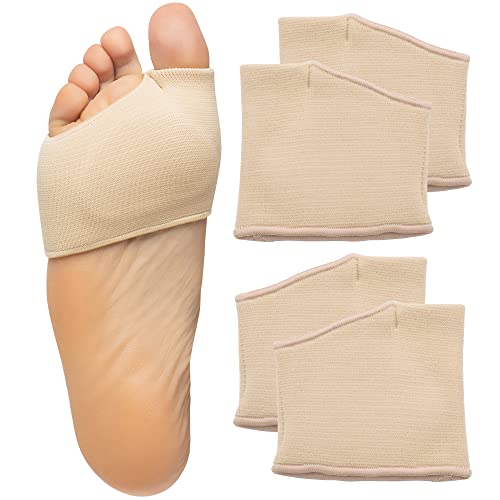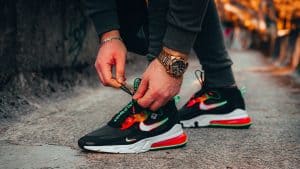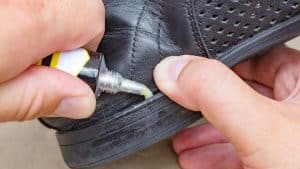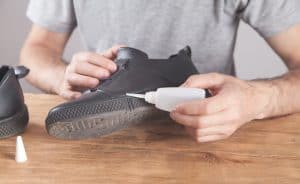Sandals that rub the top of your foot can be one of the most annoying things to experience. Not only is it uncomfortable, but it can mean dealing with discomfort for hours until you can get home and throw on a pair of slippers. For this post, we've researched how to keep your sandals from rubbing the top of your foot and other methods to reduce friction when wearing them.
Here are a few good tips to stop sandals from rubbing the top of the foot:
- Use foot powder
- Use anti-friction sticks
- Use protective sleeves
- Stretch the sandals out
- Break the sandals in
- Insert soft barriers
Please keep reading as we delve into how to apply these recommendations to your feet or shoes. We'll also discuss how to stretch or break-in new, strappy sandals. And, if you've already encountered a blister, we'll help you heal it with some great care tips!
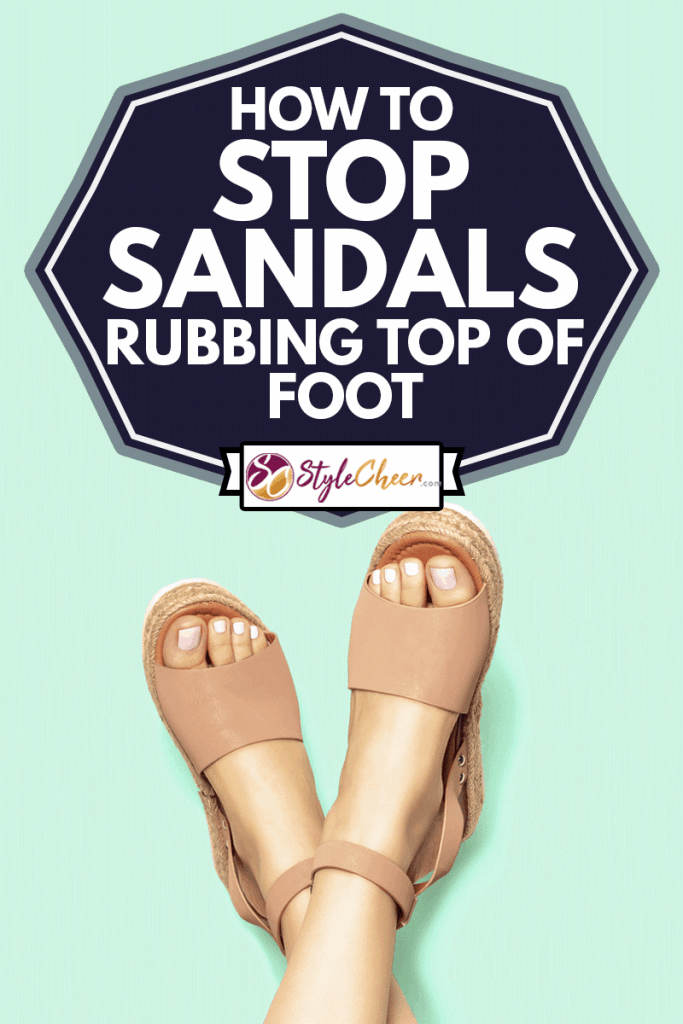
This article may include affiliate links and elements that were carefully created by our team using advanced ai to help you envision the best style advice.
How To Stop Sandals Rubbing Top Of Foot
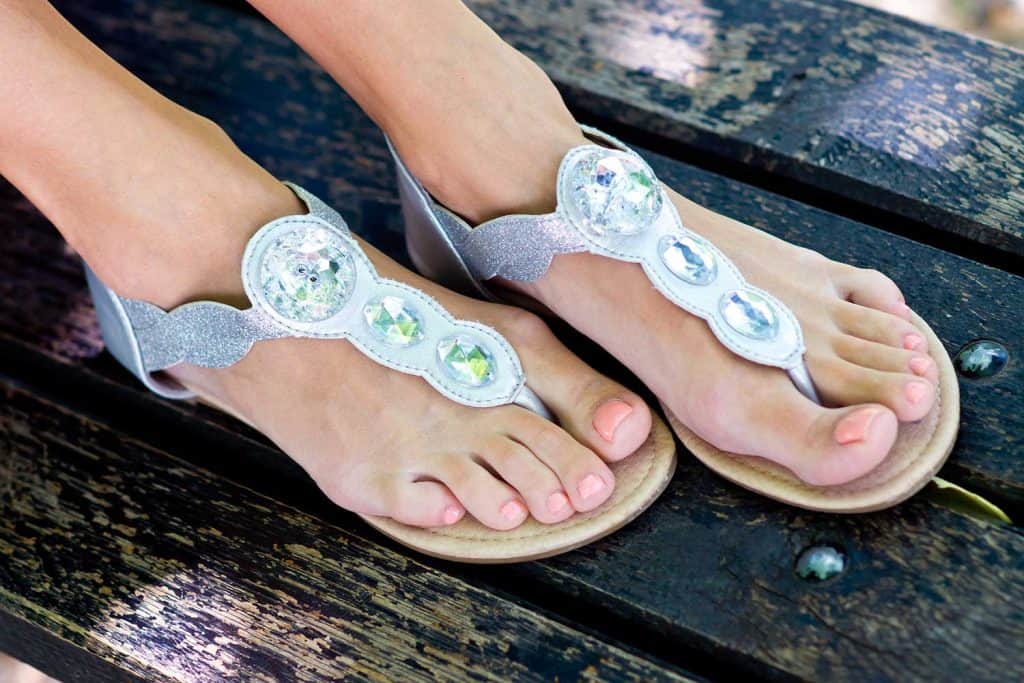
You'd be surprised by the number of simple techniques that you can use to prevent sandals from rubbing the top of your foot. However, if you try various techniques and notice that the problem only seems to get worse, you may want to visit a podiatrist to see if any underlying health conditions may be contributing to the issue.
Use foot powder
Try adding sweat-absorbing foot powder to your sandals to help reduce the friction on the top of the shoe. To do this, simply sprinkle the powder on the top of your foot before sliding on the sandal or sprinkle it on your hand and rub it on the underside of the sandals to reduce friction.
Use anti-friction sticks
These sticks look and feel like deodorant. You can rub them on the top of your foot or the underside of the sandal to reduce harsh rubbing. The top of your foot may feel slippery after the application, but that's normal.
Use Protective Sleeves
One of the simplest ways to prevent blisters from forming on the top of your foot is to insert a protective sleeve into your sandals. These sleeves can be made of gel or soft foam and will help to add a bit of cushion against your foot. There are disposable protective sleeves available as well as slightly thinner washable protective sleeves that can help you maintain dexterity in your shoes.
Buy arch compression support sleeves on Amazon.
Stretch the sandals out
A common reason why your sandals may be rubbing against the top of your foot is that the size is incorrect. One of the quickest ways to stretch your sandals is by taking a Ziploc freezer bag, filling it with tap water, and then placing the shoes inside of it. Next, place the bag with the shoes inside in the freezer for about 4 to 5 hours and then defrost them with water. Once the shoes are dry, they should be a bit looser.
Break the sandals in
If you are having a tough time breaking in a new pair of sandals, it helps to wear them around the house for a day or two before embarking on outside surfaces, which are harder and less forgiving. If this doesn't help, take a hairdryer and place it on low while stretching the sandals out with your hand.
You can also wear the sandals while using the blow dryer to hover over them--this will help the material bend around your foot's shape. Be sure not to keep the dryer on the shoes for too long, or it may cause damage, especially if the shoes are made of leather. You should notice a difference after about 5 minutes.
Insert soft barriers
Another option is simply adding soft support to the top of your shoe to help he's the friction from the rubbing. You can buy foot support cushions on Amazon, at Walgreens, or in any local shoe store. Heavy cushions can be inserted on the top of the shoe's underside, and they typically come with an adhesive backing to make sure that they stay in place. If the shoes are too big, consider adding more than one cushion.
Should you size up or down in sandals?
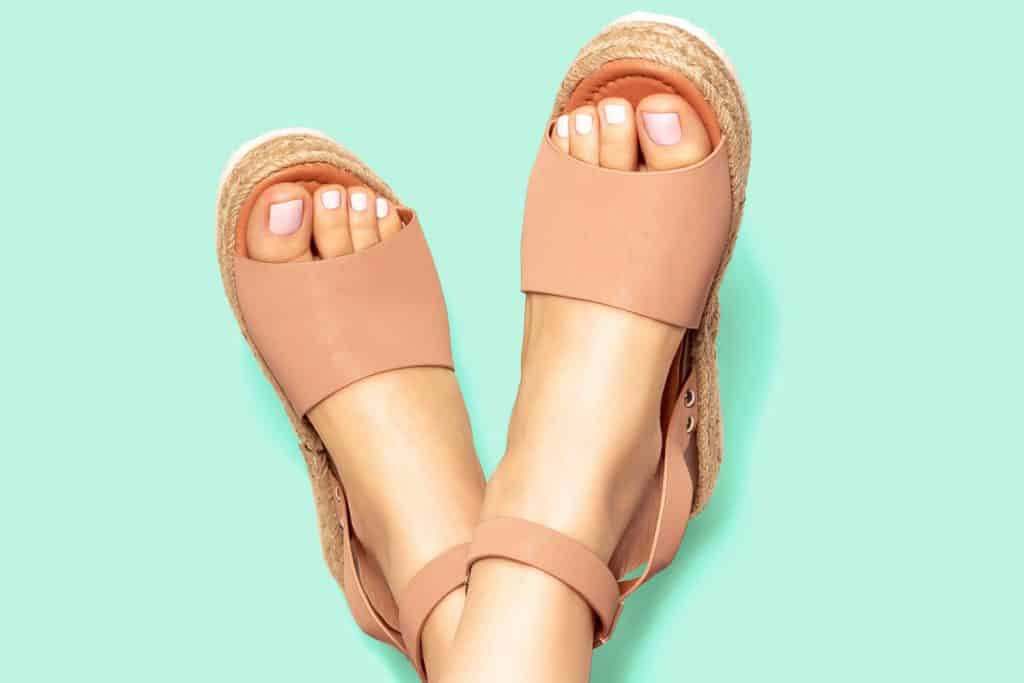
When buying new sandals, it's always best to purchase a size up. The reason is that sandals are designed to fit a bit differently than traditional casual and tennis shoes. So, for example, if you wear an 8.5 you may want to consider buying a sandal that is a size 9.
How to stretch strappy sandals
There are several ways to stretch strappy sandals so that they can fit better. Let's look at a few of the most common ones.
Try socks & a dryer
For this method, you'll simply need to wear one or two pairs of thick socks and then put on your sandals. Take a hairdryer (on a low setting) and apply it to the different shoe parts, making sure to hover it directly over the straps. Be sure to also place it over any areas of the shoe that may feel tight. You can try this method multiple times until you get the shoe to fit comfortably.
Use water
This method should only be used on leather sandals. Start by pouring half a gallon of water in a 2-gallon bucket and then place the sandals in the water. Take the sandals out after 5 to 10 seconds and then walk in them for about 20 to 30 minutes--yes, it may feel a bit weird. Next, take the sandals off and set them somewhere to dry. Once the sandals are dry, you'll notice that they fit a bit looser than before. Be sure not to try this method more than once or twice, as you don't want to ruin your shoes permanently.
Buy a 2-gallon bucket on Amazon.
Go for a walk in them
One of the best ways to break in your sandals is to go for a good walk. Consider taking a 30-minute walk outside. If there are areas of the sandal that are tight, be sure to use moleskin or cushions to alleviate pain and prevent blisters. It may be a good idea to do this two or three days in a row to give the sandals a good stretch and adjust them to the shape of your foot.
Use a shoe stretcher
Using a shoe stretcher is one of the easiest and quickest ways to stretch your new sandals. You can buy them online or at local shoe stores. To get the best results from shoe stretchers, leave them in your sandals for about a week before you take them out. Be careful not to stretch the sandal too much initially, as too much pressure made damage them. Slow, gradual stretching is better.
Buy a shoe stretcher on Amazon.
How to heal blisters on feet?

Blisters on your feet can be especially uncomfortable. And sometimes, they can seem to take forever to heal. Ultimately, they result from constant friction on the skin, which irritates to the point that it causes a fluid-filled lump to develop on top of the irritated area. Here are a few ways to help them heal faster.
Treating blisters that haven't drained
Be sure not to puncture the blister, as it can worsen things. Leave it uncovered or cover it loosely with a Band-Aid. The most important thing to do is avoid putting any pressure on the blister or the area around it. You can also put moleskin over it to help alleviate any pain or friction.
When taking a shower, be sure to avoid cleaning the blister directly, as you may inadvertently puncture it, causing it to drain prematurely. Over the next few days, the blister will drain are settle on its own.
Treating blisters that have drained
Once the blister has drained, immediately wash the area with warm water and mild soap. Do not apply any chemicals to the blister, such as iodine, hydrogen peroxide, or alcohol. Instead, apply a dab of antibiotic ointment to the blister and the surrounding area and then cover the area loosely with guys or a sterile Band-Aid.
Buy antibiotic ointment on Amazon.
How & when to drain a blister
Start by washing the blister and the surrounding area with mild soap and warm water. Sterilize a small needle or safety pin with water and rubbing alcohol and make a small hole on the blister's outer edge. Then, grab a cotton swab gently press down on the blister so that the fluid drains out. Wash the blister again with warm water, and be careful not to remove the loose layer of skin on top. Apply an antibiotic ointment to the blister and surrounding area, and then cover it loosely with gauze or a sterile bandage.
As the blister begins to heal, be sure to change the bandage every day or whenever it becomes wet or dirty. You'll also want to avoid wearing tight-fitting shoes or engaging in activity that may irritate the blister-- this may cause it to take longer to heal. One way to prevent blisters in the future is to wear thick socks and ensure proper fitting of all sandals, tennis shoes, and casual shoes. If you begin to notice any signs of infection on the blister, including pus, warm skin or redness, swollen lymph glands, or increased swelling and pain, you may want to contact a doctor as soon as possible.
Wrapping Things Up
As you can see, there are several simple methods that you can use to keep your sandals from rubbing the top of your foot. You can also employ some of the same methods to stretch them out if they are too tight in certain areas.
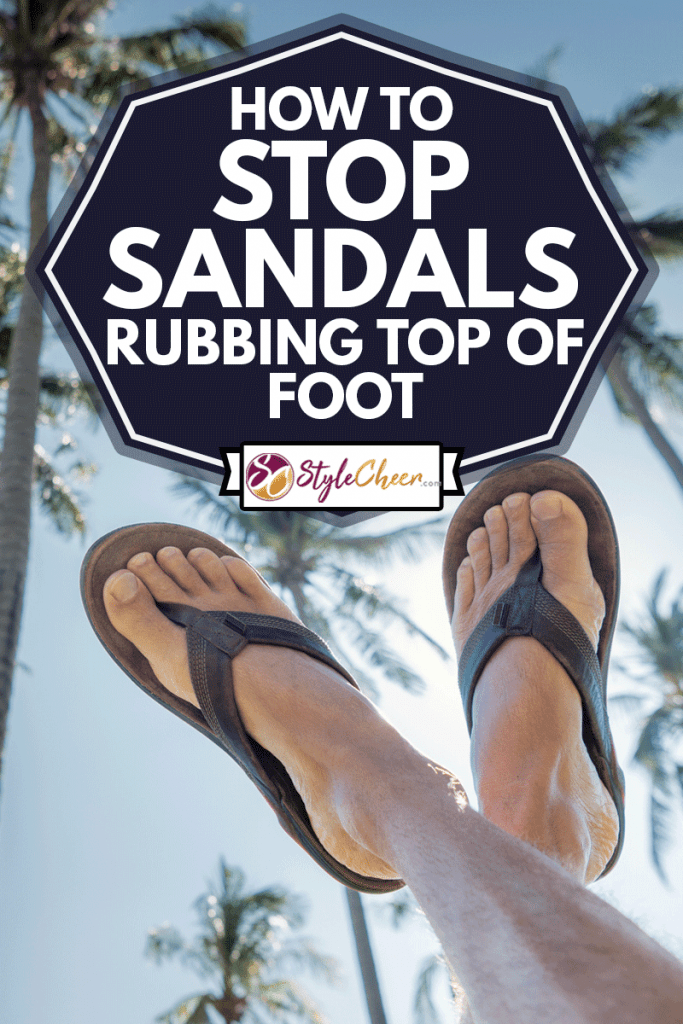
Before you go, be sure to check out our other post:




